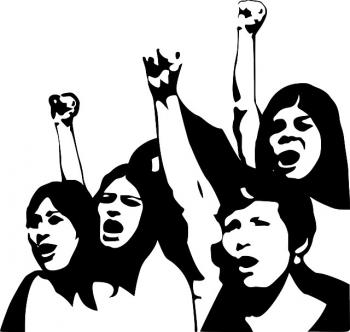With friends like these, who needs enemies? According to David Climenhaga, that may be exactly what Wildrose party leader Brian Jean is beginning to think. He’s got a difficult task ahead of him as he tries to unite the “right people and the right ideas” in Alberta. But who are these right people, and more importantly, how will the Wildrose identify the wrong ones? Already, the tone is becoming blunter in Jean’s announcements, asking party supporters not to allow “the allure of a short cut, presented by outsiders, to derail what must be a transparent, grassroots-driven process.” The Wildrose are clinging to the reins as they try to steer the diverse groups that make up Alberta’s right-leaning community. But just how long will they be able to hang on?
Speaking of political allegiances, Colter Louwerse turns the discussion to Israel, where the Liberals have done little to distance themselves from Stephen Harper’s legacy. Foreign Minister Stéphane Dion has issued a vague statement on the matter, identifying “comprehensive, just, and lasting peace” as the ideal outcome for all parties. However, there is much to be done before Canada can genuinely support such an ideal. After all, in November 2015, Canada was one of only seven countries that opposed the “peaceful settlement of the question of Palestine.”
Abroad in the US, politics continue to dominate much of the news discourse. But while Trump is the candidate to make headlines in Canada, there’s another so-called radical that’s earning the ire of some Americans. Yes, Bernie Sanders has become the Trump of the left –at least, that’s what he’s being painted as. Gerry Caplan examines American perceptions of right, left, socialism, and communism, and raises the question: is Sanders really that radical? And, where would he fit in the Canadian political system?
Svea Vikander brings the conversation closer to home, with the 20th installment of her series on personal experiences with sexual harassment and violence. Incident 20, as she calls it, is an insider’s look at an American Psychological Association convention. Expecting a meeting of bright academic minds, Vikander was disappointed to discover a congregation of men who debated without understanding the subjects they were discussing, attacked female presenters for their ideas, and approached conference attendees in such a way that it was clear there was more than academics on their minds. It’s a troubling look into the intersections of gender and academia, and an excellent read.
Vikander’s piece is more than good writing –it’s a compelling answer to Erin Wunker‘s question: Why do gender studies still matter in the humanities? Answering her own query, Wunker offers an engaging look at the intersection of gender studies and multiple present-day conflicts. What knowledge will lead us to become better people, and who determines this standard? The humanities are an unfinished project, and gender studies are it its core.
Last but not least, Laura Landertinger takes a closer look at Canada’s child welfare services. Though the Canadian Human Rights Tribunal has finally confirmed the federal government provides less funding for Indigenous people, Landertinger examines the many unexposed roots of the issue. Not only are Indigenous services underfunded, the bulk of the federal money goes toward child collection –not prevention. This is reflected in the number of Indigenous children under 14 currently in the foster system. Nearly half of these children are Indigenous, despite Indigenous children making up only seven per cent of the population. It’s time for change.



